Results
3 results found
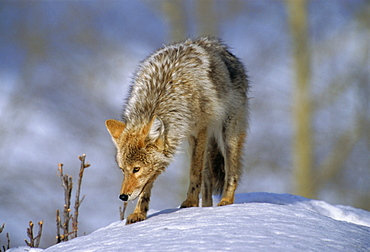
Coyote (Canis latrans), weighing 30-40 lbs, less than half the weight of a wolf, Yellowstone National Park, Wyoming, USA
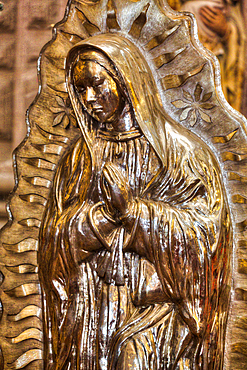
Virgin of Guadalupe Statue, largest in the World, six feet tall, solid silver, 380 lbs, Church of Santa Prisca de Taxco, founded 1751, UNESCO World Heritage Site, Taxco, Guerrero, Mexico, North America
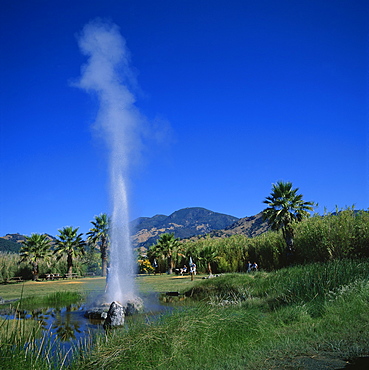
The Old Faithful Geyser at Calistoga, erupts 60 ft high every 30 minutes, with a pressure of 1000 lbs per square foot, Napa Valley, California, United States of America, North America
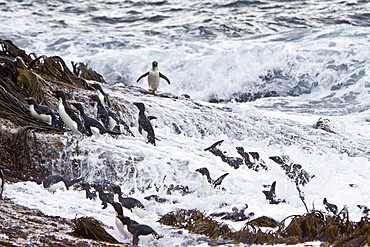
Adult Southern Rockhopper Penguins (Eudyptes chrysocome chrysocome) in the Falkland Islands. This is the smallest yellow-crested, black-and-white penguin in the genus Eudyptes. It reaches a length of 45-58 cm (18-23 in) and typically weighs 2-3.4 kg (4.4-7.5 lb), although there are records of exceptionally large rockhoppers weighing 5 kg (11 lbs). Their common name refers to the fact that unlike many other penguins which negotiate obstacles by sliding on their bellies or by awkward climbing using their flipper-like wings as aid, Rockhoppers will try to jump over boulders and across cracks. This behavior is by no means unique to this species however - at least the other "crested" penguins of the genus Eudyptes hop around rocks too. Southern Rockhopper Penguins have a global population of roughly 1 million pairs, perhaps a bit more. About two-thirds of the global population belongs to E. c. chrysocome which breeds on the Falkland Islands and on islands off Argentina and southern Chile. The Southern Rockhopper Penguin is classified as Vulnerable species by the IUCN.
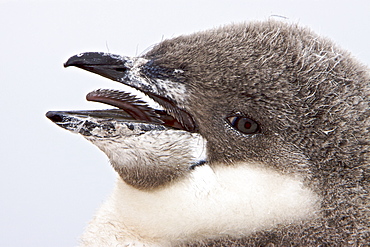
Chinstrap penguin (Pygoscelis antarctica) chick head detail at colony on Useful Island near the Antarctic Peninsula. There are an estimated 2 million breeding pairs of chinstrap penguins in the Antarctic peninsula region alone, perhaps as many as 7.5 million breeding pairs in all of Antarctica. Their name derives from the narrow black band under their heads which makes it appear as if they are wearing black helmets, making them one of the most easily identified types of penguin. Other names for them are "Ringed Penguins", "Bearded Penguins", and "Stonecracker Penguins" due to their harsh call. They grow to 68 cm (27 in). The average adult weight of a Chinstrap Penguin is 4.5 kg (10 lbs). Weight can range from 3 to 6 kg (6.6-13.2 lbs), with males being slightly larger and weight varying based on where the penguin is in the breeding cycle. Their diet consists of krill, shrimp, and fish. On land they build circular nests from stones, and lay two eggs, which are incubated by both the male and the female for shifts of five to ten days. They can also breed on icebergs, though they prefer non-icy conditions. The chicks hatch after about 35 days, and have fluffy gray backs and white fronts. The chicks stay in the nest for 20?30 days before they go to join a creche. At around 50?60 days old, they moult, gaining their adult plumage and go to sea. The Chinstrap Penguin was first described by German naturalist Forster in 1781. Its specific epithet was often seen as antarctica, however a 2002 review determined the genus Pygoscelis was masculine, and hence the correct binomial name is Pygoscelis antarcticus.



